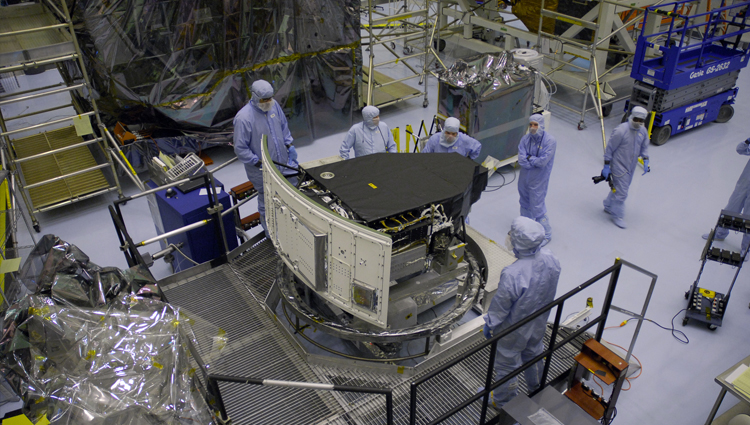Picturing An Infant Universe
New images recorded by the Hubble Space Telescope provide the earliest look yet into a young universe.
Image

Media credits
WASHINGTON (ISNS) -- A new image from NASA's Hubble Telescope has provided astronomers with the earliest snapshot ever taken of galaxies in the universe's infancy, about 600 million years after the Big Bang.
The deep look into the ancient cosmos revealed baby galaxies very different from those that exist now.
"We're seeing very small galaxies that are the seeds of the galaxies today," said Garth Illingworth of the University of California, Santa Cruz.
These galaxies, which are very blue and only 1/20 the size of our own Milky Way, may help to explain where the first stars came from.
After the bright energy of the Big Bang -- which took place about 13.7 billion years ago -- the universe became a dark place. For hundreds of millions of years there were no stars or galaxies, mostly hydrogen and helium gas and a faint glow.
Then something happened around 400 million years ago that caused the first points of light, the stars, to be born and end the dark age. The stars shot off a lot of ultraviolet energy that "reionized" the universe's hydrogen gas, giving it a charge. The exact sequence of events that led to the first stars is one of biggest mysteries in cosmology, but formation of galaxies is thought to be a likely culprit for kicking off this process, which lit up the universe like a Christmas tree.
To find the earliest galaxies, astronomers look for far-off objects whose light has spent more time traveling to Earth -- to see a galaxy farther away is to see further back in time. Space telescopes like Hubble spend days collecting the faint light from this objects. A new instrument installed on Hubble in May 2009, called the Wide Field Camera 3, improved its ability to spot extremely faint infrared light coming from objects extremely far away.
With this instrument Hubble can see infrared light "about 250 million times fainter than the unaided eye see visible light from the ground," said Rogier Windhorst of Arizona State University in Tempe.
The image presented on Jan. 5 at the American Astronomical Society meeting in Washington shows a handful of galaxies that are 13 billion light years away -- that is, light traveled for 13 billion years, 95 percent of entire life of the universe, to reach the instruments aboard the Hubble. This pushes the time of galaxy formation back before 600 million years, within striking distance of the time of reionization.
Illingworth believes that an even deeper look could reveal galaxies from an even earlier time. But traveling that far back in time will have to wait for the launch of the more powerful James Webb Space Telescope, scheduled for launch in 2014.
"We're just at the beginning of this story," said John Grunsfeld, former astronaut and deputy director of the Space Telescope Science Institute in Baltimore, Md.
Filed under

